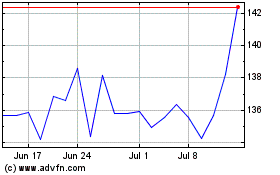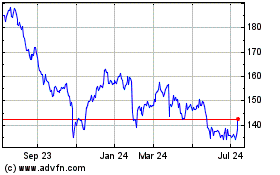The following is an article written by Will Gensburg of UPS.
How much time do you spend online in a given month? The average
American spends 35.2 hours per month online, according
to comScore market research.
Canadians spend 36.7 hours per month, the most time
online of several major economies that comScore studied in
late 2014. The country is also one of the most “connected” in the
world with 91 percent of Canadians having access to the
internet.
The “connected Canadian” is an enormous growth opportunity for
online retailers. By 2019, 9.5 percent of all Canadian retail
spending — projected at C$39.9 billion — will be done online, up
from 6 percent in 2014, according to Forrester.
Yet many U.S. retailers are surprisingly hesitant to conduct
business with our northern neighbor. The reasons vary from
intimidation by the sheer size of the country — it’s second only to
Russia in land area — to navigating the financial, tax and customs
aspects of exporting.
The greatest risk, however, could be waiting to embrace
cross-border e-commerce while ready-and-willing Canadian online
shoppers build relationships with other retailers from the U.S. and
other countries.
Personalized e-commerce
Canadian shoppers want an online shopping experience that speaks
to them — not one that feels like just an add-on to the
American site.
They might ask themselves: Are the prices I’m seeing on a
retailer’s website competitive and converted to Canadian dollars?
Does the total cost for my order include all taxes and fees? What
shipping options are available?
The answers to these questions help determine how likely a
consumer in Canada is to shop with retailers across borders.
Personalization plays a huge role in the pre-purchase and
checkout experiences. When a consumer visits a retailer’s website,
that visit opens the door to collect data on that customer’s
interests and geographic location.
That data also can be used to create localized promotions and
advertising campaigns that drive traffic and engage customers. When
you’re talking to shoppers in Quebec, those campaigns should be in
French, the official language of the second most populous province
in the country.
Retailers can create customized experiences with tools like UPS
i-parcel. This technology welcomes online shoppers in their native
language, converts pricing to the shopper’s local currency and
offers familiar payment options.
All duties, taxes and fees can be displayed in the shopping cart
along with affordable delivery options proven to increase
conversion rates.
Pay attention to value
and total price
International shoppers expect to see the total price when
shopping online and not just the cost of the item itself. According
to the UPS Pulse of the Online Shopper study, consumers’ top
consideration when shopping internationally is the total cost of
the order, including clearly stated duties and taxes (75 percent),
followed by stating the total price in one’s home currency (73
percent).
Canadian shoppers are well-versed in their country’s complicated
tax structure and low de minimis value – the value above which
customs duties must be paid. Duties must be paid on online
orders of C$20 or more, which is equal to roughly US$15.
Taxes may include Canada’s Goods & Services Tax (GST),
Provincial Sales Tax (PST) or Harmonized Sales Tax (HST). Total
costs, including tax and delivery, are what determine whether the
consumer will make de minimis value — or abandon —the purchase.
Engaging a partner that can accurately display duties and taxes
at the time of checkout helps protect your business from customer
complaints and the expense of refused orders upon delivery.
Price isn’t the only factor that matters to international
shoppers. According to the UPS study, consumers mostly buy
internationally for unique products (42 percent) and access to
brands and products not available locally (38 percent).
This is where the value part of the experience comes
in. The savvy retailer can capitalize on consumer demand for
unique and otherwise unavailable products and create a premium
for their hard-to-come-by inventory.
Focus on shipping and returns
Many retailers may not realize that 90 percent of Canada’s
population lives within 100 miles of the U.S. border. In some
instances, online shoppers living in Canada can be closer to a
U.S.-based distribution facility than most customers living in the
United States.
Being upfront about shipping costs and delivery times is
extremely important to Canadian consumers. According to
the UPS Global Pulse of the Online Shopper study, Canada has
the highest percentage of shoppers who have abandoned a cart for
reasons related to shipping costs. The second most frequent reason
for online cart abandonment cited in Canada is the time it takes to
receive a package.
Then there are returns: More than four in 10 Canadian shoppers
said they would be unlikely to complete a sale if they had to pay
for returns shipping, and 65 percent will shop more with a retailer
if they offer a hassle-free returns policy.
It’s critical to partner with a global shipping provider that
has operations, tracking and flexible services to balance speed and
costs. Expertise in customs is also important to seamlessly ship
deliveries across the border on time and in compliance with
Canadian import regulations.
Don’t be left behind
Online shoppers in Canada are helping drive double-digit global
e-commerce growth, which far outpaces traditional retail sales. In
fact, 60 percent of Canadian shoppers are already making purchases
from U.S. online retailers.
There are logistics and business challenges associated with
targeting consumers in Canada, but the payoff far outweighs the
hurdles. The good news is that retailers don’t have to navigate
these challenges alone.
Find a partner that understands the Canadian shopper’s delivery
preferences and create a positive experience for these people. The
company should know the ins and outs of the Canadian market, excel
in customs clearance and help you master shipping and returns. It’s
all about having a localized, cross-border e-commerce program.
Don’t miss out on an opportunity that is so close and
yet, so far away, for far too many retailers.
Will Gensburg is the Vice President and Managing Director
of UPS i-parcel.
Reprinted with permission of Longitudes, the UPS
blog devoted to the trends shaping the global economy.
We welcome the re-use, republication, and distribution
of this commentary - as long as you credit us. If you publish,
please insert the tagline above, with embedded hyperlink to our
site.
UPS Public Relations
404-828-7123
United Parcel Service (NYSE:UPS)
Historical Stock Chart
From Mar 2024 to Apr 2024

United Parcel Service (NYSE:UPS)
Historical Stock Chart
From Apr 2023 to Apr 2024
